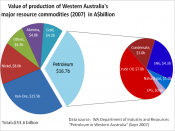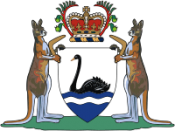In January 1901, the six separate, self-governing colonies of Australia united in federation, consequently creating the continent- nation, the Commonwealth of Australia. A constitution was drawn up modelled similarly, upon the British and American constitutions. As an outcome of federation, the life of the separate states, and individual citizens shifted. Edmund Barton, the introductory prime minister of federal government supported the growth of the nation's economy, and developed the creation of a fused defence system. In the following subsections, we will discuss the reasons for the states, desiring federation, and the benefits they obtained, in signing the historical Commonwealth of Australia Act in the June of 1900[Western Australia signed a month there after.]
The birth of a new century, and nation, was the cause for celebration, for the people Australia. The formal ceremony, held in Centennial Park, Sydney was attended by 200, 000 people. Nationwide, citizens celebrated in a newfound sense of nationalism.
Nationalism was among the first and most significant compensations of federation. The petty state rivalries, especially between NSW and Victoria, were for the moment dismissed. Within the following decade, this sense of nationalism helped create a freer economy and transportation system. The individual states, allowed a central government pass decisions concerning the nation as a whole i.e. defence system.
The economy of the six colonies, prior to federation, had relied heavily on the rural sector. The discovery of gold in Victoria and Western Australia, especially, lead to economic growth. Following federation, the economy of Australia, and the individual states, was booming. Australia's patterns of exports show, that in 1901 the value of exports stood at 35.3 million pounds. The figure doubled to 67.5, in 1911. The Australian economy had never seen such a rate of growth, over a 10-year period. The growth of the manufacturing industry...



Australian Federation
I confess to not being as familiar with Australian history as I should be and thank you for your informative report which does a wonderful job of filling in some of the gaps in my knowledge. I have always had a special fondness for Australia as well as for its people and hope someday to visit. Excellent effort!
4 out of 5 people found this comment useful.